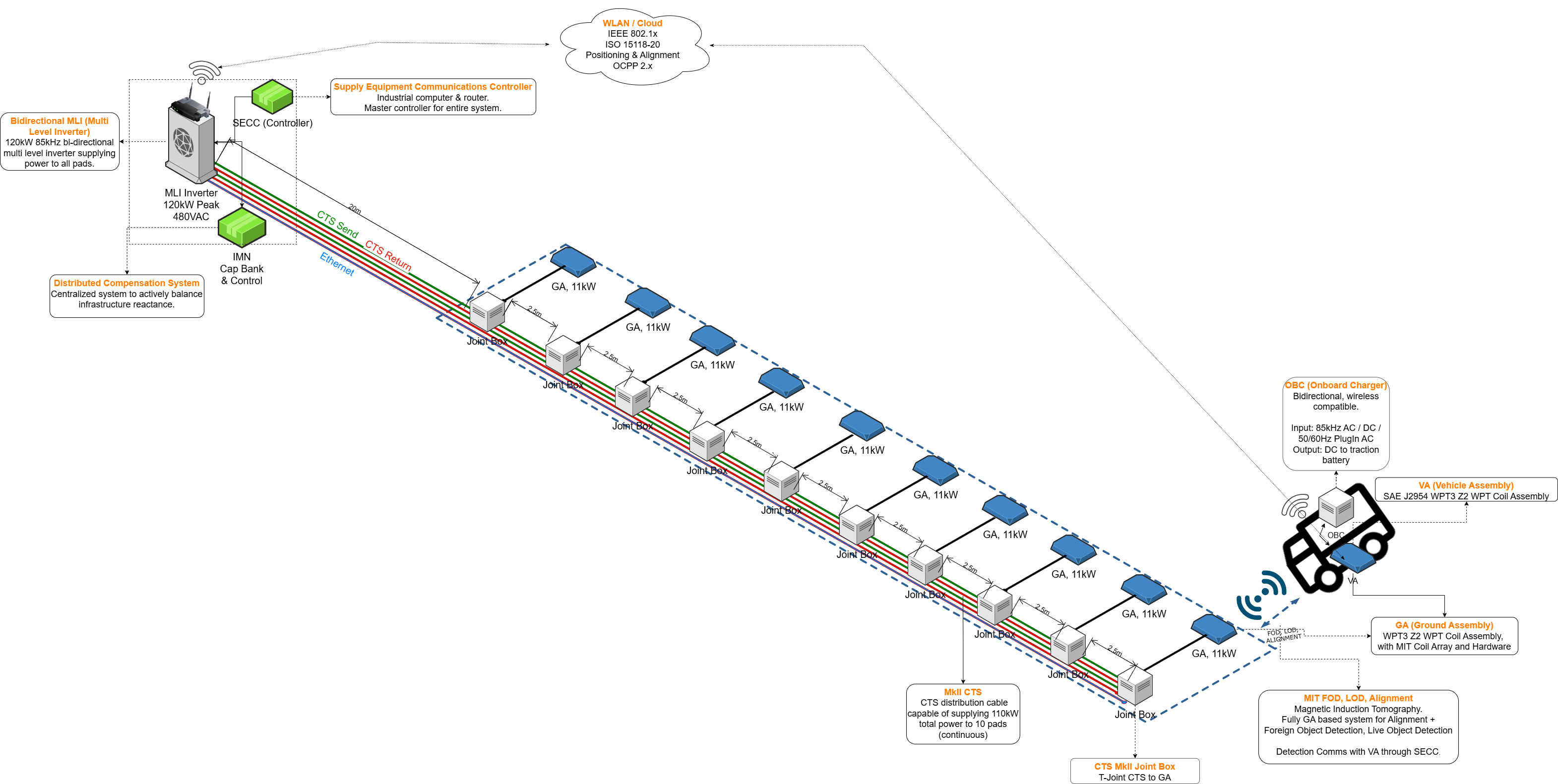WPT Infrastructure
Our cost-effective, high-performance answer
Deploying any EV charging network is expensive so Electric Green’s focus has been on reducing costs and striving to deliver the lowest cost per chargepad infrastructure solution. Our centralised architecture and use of the patented Capacitive Transfer System (CTS) are key to achieving the economies of scale which make these goals achievable. For instance, we don’t have 1 charger per space, we have one large charger serving multiple spaces on a common backbone.
We are also dedicated to bi-directional energy transfer which will revolutionise how power is managed between vehicles and 3rd parties. V2X, V2G, V2H etc all help drive down the cost of charging infrastructure through enhanced business and charging models which is why we’ve integrated this functionality from the outset.
Our infrastructure architecture includes the following features:
Centralised Architecture
Intelligent Power Management
Bi-directionality
Standards Compliance
CTS Distribution Technology
Enabling a ‘1-2-Many’ topology where multiple chargepads can be supplied from a central power supply. This removes power electronics from the roadway, making maintenance and heat recycling much easier.
This is based on time division multiplexing so charging rates can adapt to different dwell times and battery status.
Our solution is also bi-directional, in readiness for V2G, V2H and V2X. Communications are handled via ISO 15118-20 and OCPP 2.1, with power electronics optimised for bi-directionality via parallel IMNs and magnetics (coils) and a G99/G100 import/export inverter.
Future-proofing will be achieved through compliance with SAE J2954 and IEC 61980 WPT standards, ISO 15118-20 and OCPP 2.1 communication standards, and ICNIRP, EN and IET safety standards.
CTS allows us to distribute 85kHz power over considerable distances, making installation far more flexible. The charger doesn’t need to be located by the chargepads so there is no street furniture at point of charge!

WPT Infrastructure Diagram
Major elements of our WPT infrastructure, along with a Vehicle Assembly for reference, can be seen in the diagram above. This particular variant of the system, a 110kW (120kW peak) system with 10 x 11kW pads over 55 meters, is suited for a depot installation with an LCV delivery fleet operator. Other use cases require alternate variants of our WPT infrastructure.
How does it work?
Curious as to how it works? Watch the video for an explanation of EV charging evolution and why our solution is the best way forward.
